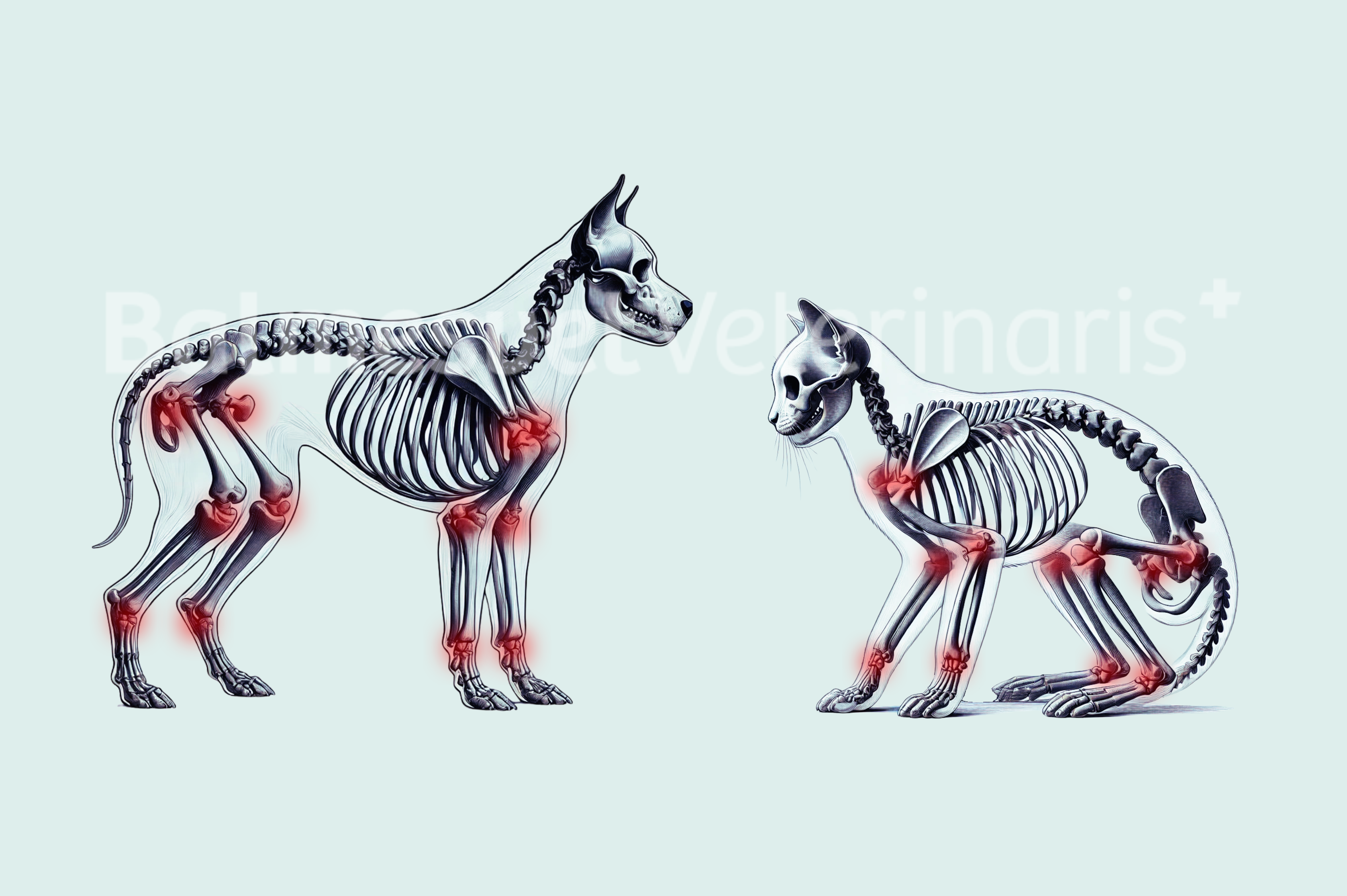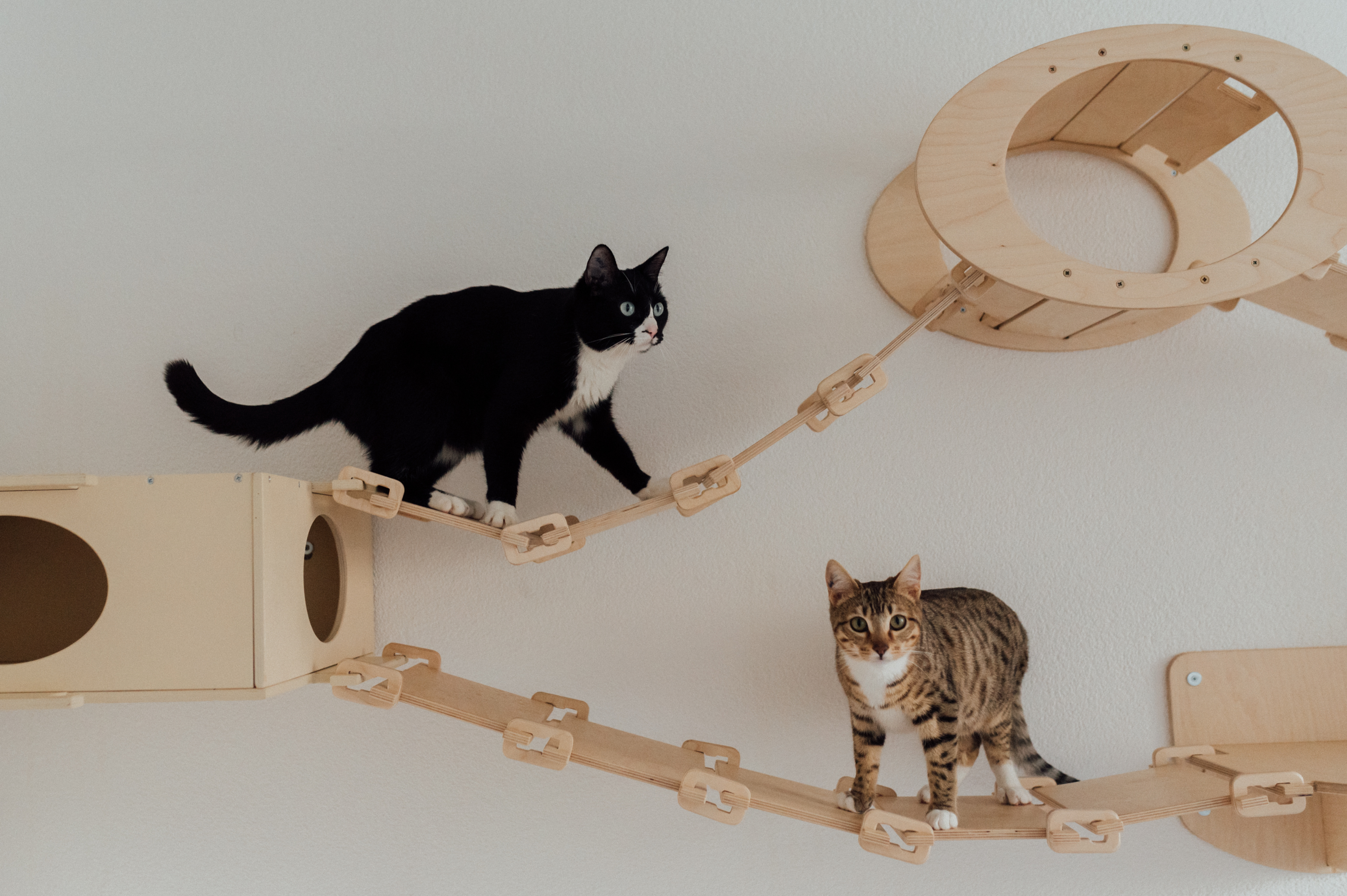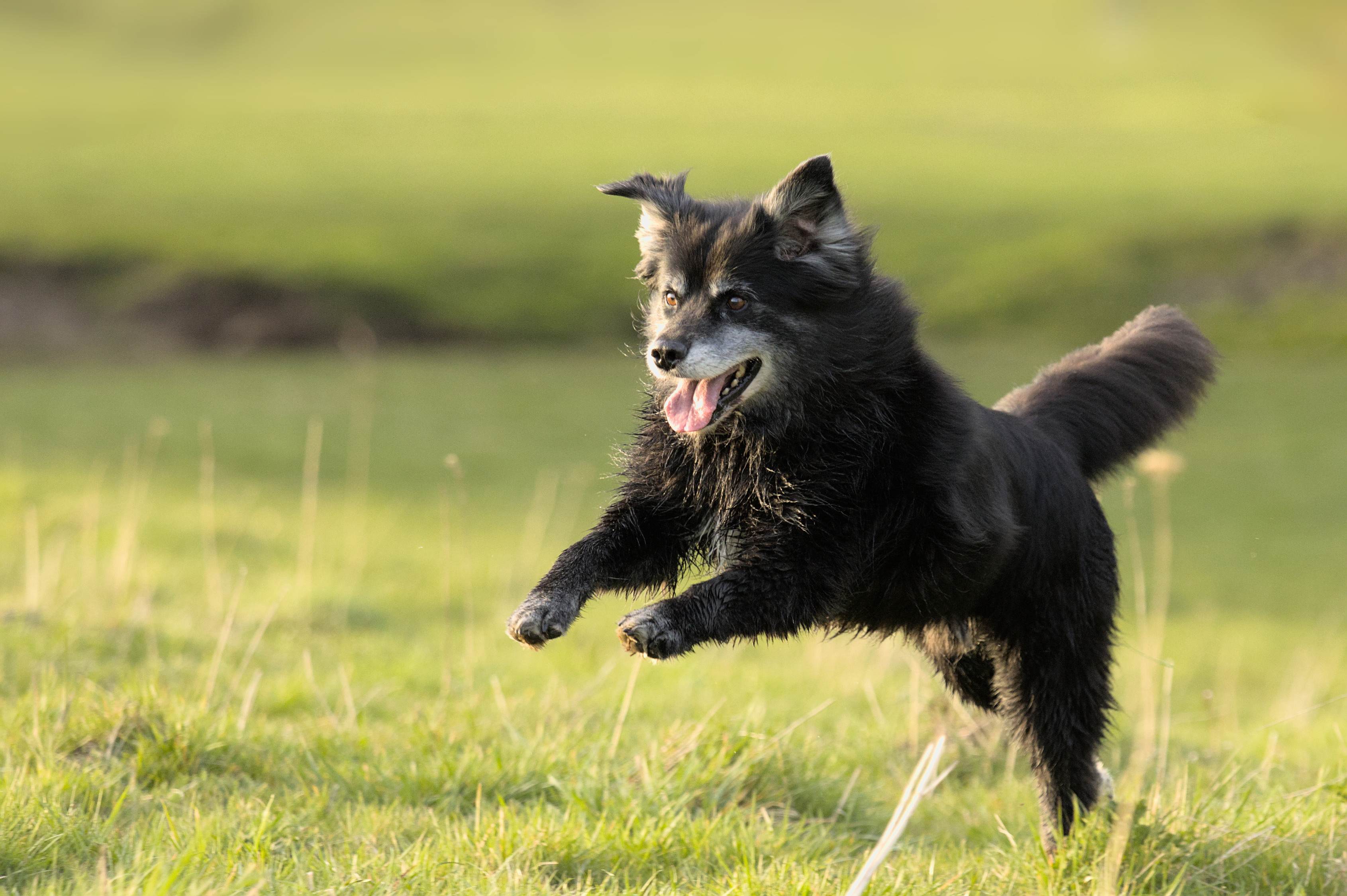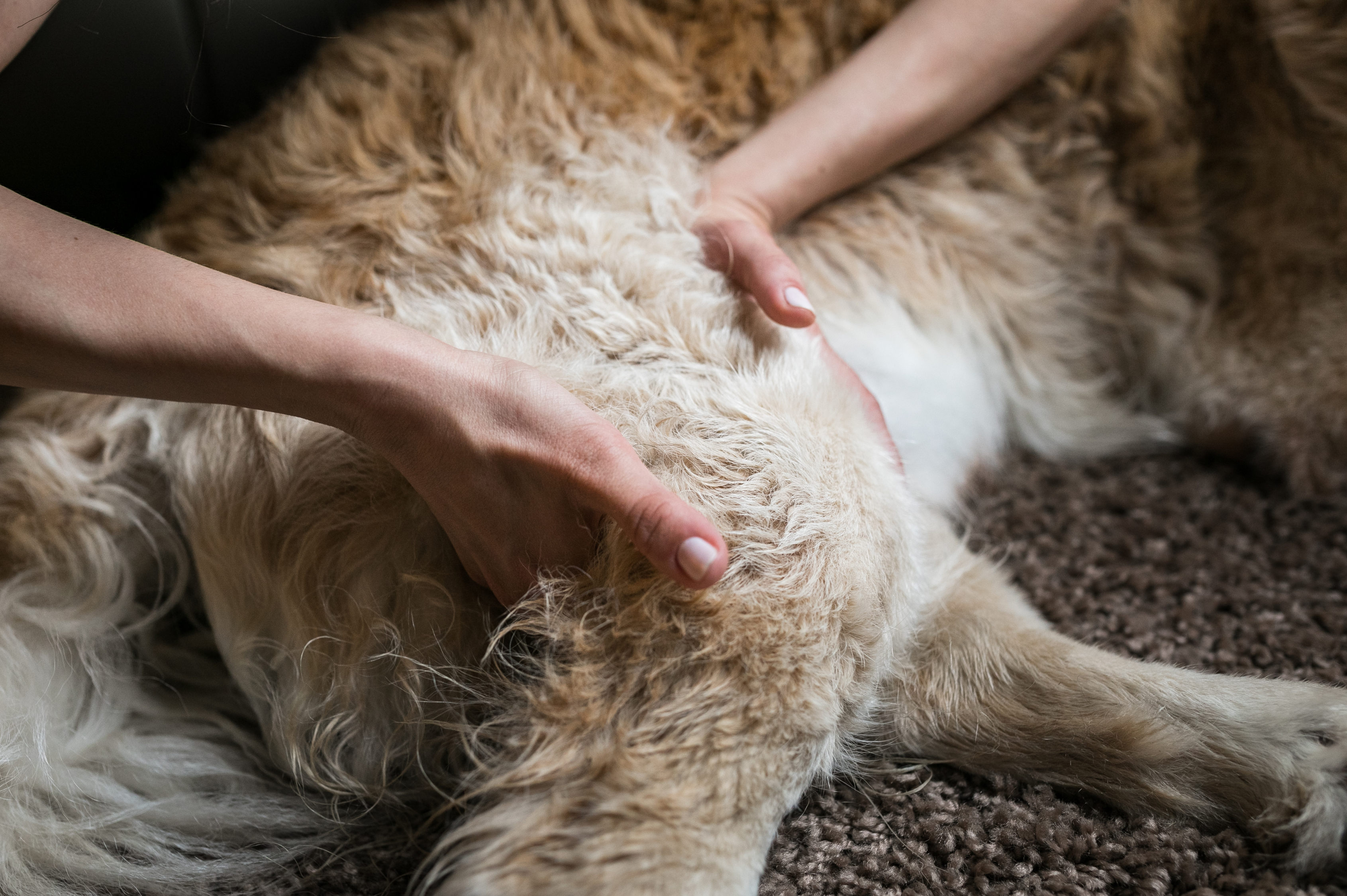Osteoarthritis in cats and dogs, also known as degenerative joint disease (DJD), is one of the most common pathologies we treat in our orthopedic and trauma specialty. Although it is a complex disease, early diagnosis and proper treatment can make a big difference in your pet’s quality of life.
Osteoarthrosis is estimated to be as prevalent as 39.8% in dogs, although only 23.6% of dogs show clinical signs. In cats, the diagnosis of osteoarthritis is often more complicated due to the reserved nature of this species, which makes it difficult to detect early symptoms.
In this article, we will address the pathophysiology, symptoms, diagnosis, and treatment options for osteoarthrosis or osteoarthritis, with a focus on caregiver education and comprehensive management of affected patients.
What is osteoarthritis or Degenerative Joint Disease (DJD)?
Osteoarthrosis is a chronic, progressive and irreversible condition that initially affects the joint cartilage, but eventually involves all joint structures: muscles, tendons, ligaments, joint capsule and underlying bone. Although it mainly affects synovial joints, it can also involve other structures such as the spine.
Among the factors that contribute to its occurrence are the following:
- Genetic predisposition: breeds such as the German Shepherd, Labrador and Golden Retriever are more prone.
- Obesity: excess weight increases the load on joints.
- Insufficient exercise: Both sedentary lifestyles and excessive exercise can contribute to the development of DJD.
- Age: Although it is more common in older animals, young animals can also be affected.
Osteoarthrosis symptoms in cats and dogs
The most common symptom is pain, which shows up as:
- Limping: can vary in intensity and appear intermittently or constantly.
- Decrease in activity: especially noticeable in cats, which avoid jumping or moving.
- Morning stiffness: difficulty getting up after periods of rest.
As the disease progresses, pain may change from being localized and mechanical to more widespread and continuous, due to the involvement of the periosteum and other highly innervated structures. This pain can lead to sensitivity phenomena such as hyperalgesia (exaggerated response to stimuli) and allodynia (pain in response to non-painful stimuli).

How is osteoarthritis in dogs and cats diagnosed?
Diagnosis of canine and feline osteoarthrosis is essential for proper treatment. It includes:
- Anamnesis: detailed medical history that considers previous illnesses, exercise habits, diet and specific symptoms.
- Physical exam: orthopedic and neurological evaluation to identify limping, range of motion and pain.
- Imaging tests:
- X-rays: essential to identify changes in bones and assess the condition of joints.
- Ultrasound: useful to assess soft tissues and cartilage.
- CT and MRI scans: reserved for complex cases.
Observation of the animal’s behavior in its usual environment, through videos provided by the tutor (especially useful in cats).
Treatment of Osteoarthritis or Osteoarthrosis in dogs and cats
The management of Degenerative Joint Disease should be comprehensive and tailored to each patient. It is divided into prevention, early management and advanced treatment according to the stage of the disease.
1. Prevention and early management
- Educating the guardian: explain the importance of an adequate weight, controlled exercise and periodic check-ups.
- Adequate nutrition: avoid excess weight and consider specific diets with omega-3 fatty acids (EPA and DHA) to reduce inflammation.
- Physiotherapy and moderate exercise: maintaining the muscles without overloading the joints.

2. Pharmacological management
- NSAIDs: nonsteroidal anti-inflammatory drugs for pain and inflammation control.
- Monoclonal anti-NGF antibodies: a newer option for chronic pain management.
- Adjuvants: supplements such as chondroitin, glucosamine and antioxidants.
3. Rehabilitation and advanced treatments
- Physiotherapy and rehabilitation: muscle strengthening and improved mobility.
- Surgical techniques: intra-articular injections and perineural blocks in advanced cases.
- Changes in their living space: use of ramps, orthopedic beds and harnesses to facilitate mobility.
4. Ongoing monitoring
Periodic monitoring is key to tailoring treatment and assessing the patient’s quality of life. Research-validated scales such as CBPI and LOAD are useful tools to monitor pain.
Caregiver and veterinarian, united in the management of osteoarthritis
The care and commitment of the guardian are essential to ensuring the welfare of pets that suffer from osteoarthrosis. At Balmesvet, we not only treat the disease, but we also work with you so that you can understand every step of the process and be an active part of managing this disease with your pet.
Our veterinary trauma team is here to provide you with a comprehensive approach that includes everything from thorough patient examination and diagnostic imaging to treatment options with advanced veterinary therapies tailored to each patient’s needs.
If you suspect that your dog or cat could be affected by Degenerative Joint Disease, contact us at 931 173 173 or send us an email to atencioclient@balmesvet.com.
Together we will improve your pet’s quality of life!




